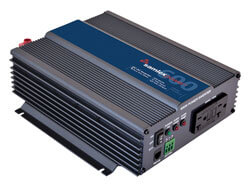mapguy525
Solar Enthusiast
For trailers I run a separate power and ground line and try to use Victron products. Anderson powerpole connectors are very nice for this application. The Victron products have adjustable turn on/off voltage set-points. This avoids running a separate ignition wire to turn on/off the DC-DC charger or installing an automatic charging relay.
I typically only use the Renogy products in vans and motorhomes because the ignition wire signal is easily accessible.
Also, consider a set of heavy duty lift gate electrical connectors like made by Phillips and others. Usually a bit cheaper than Anderson Connectors but still capable of the needed amps/volts.
http://phillipsind.com/main/electrical-connectors/plugs/liftgate-charging-plugs.html
Anderson connectors in several sizes -both genuine and copy available here:
https://www.helmarparts.com/searchresults.asp?Submit=Go&Search=anderson



